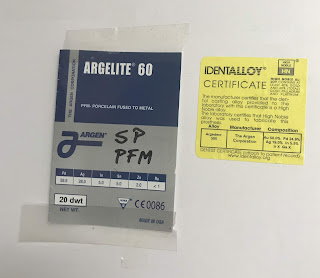Why has the time come for minimally invasive endodontics?
Recently, I have seen a couple of presentations about "Mininally Invasive" Root canals. These were given by root canal specialists who are attempting to minimize the amount of tooth structure that needs to be removed in order to successfully complete endodontic treatments.
The reasoning behind these tooth conservative endodontic treatments is that to achieve long lasting results it may help to conserve dentin both of the pulpal chamber and in the canal itself. Previously we have been taught to try and achieve "straight line access" that will make it easier to instument the delicate apical three mm at the canal terminus. Straight line access when used in combination with crown down technique makes apical zipping (transportation of the terminus) less likely since the instruments involved in the final shapping can be used minimally in a gentle fashion. The thinking is that making our access to the root canal system easier will make our success more likely and improve our success rate. This approach does provide some "beautifully shaped" canals but can sacrifice valuable coronal tooth structure and can sometimes cause the thinning of the walls of canals (especially distal wall of mesial canals and mesial wall of distal canals.
One of the common reason that endodontically treated teeth fail is fracture and it stands to reason that if root canals can be treated with the removal of less tooth structure, the fracture rate on endodontically treated teeth my diminish. This makes sense to me, but many endodontists and dentists have grown accustomed to the "faster and easier" approach endodontics and are using first and second generation Ni Ti files designed with this technique in mind.
Now there are newly designed smaller rotary files by Brasseler , with variable tapers, as well as smaller tools by various manufacturers that allow still allow vertical condensation of warm guttapercha. even in more conservatively shaped preparations. When used in combination, they allow skillful practitioners to accomplish endodontic treatment beautifully but more conservative preparations. This may take more time for them to accomplish, but sometimes "faster and easier" is not better! Spending the extra effort at conserving precious tooth structure may pay off with a tooth that has a better chance of standing the test of time and will not need eventual replacement with an implant or a bridge!
from Ask Dr. Spindel - http://ift.tt/2r3phiF - http://ift.tt/1SpPbm6
The reasoning behind these tooth conservative endodontic treatments is that to achieve long lasting results it may help to conserve dentin both of the pulpal chamber and in the canal itself. Previously we have been taught to try and achieve "straight line access" that will make it easier to instument the delicate apical three mm at the canal terminus. Straight line access when used in combination with crown down technique makes apical zipping (transportation of the terminus) less likely since the instruments involved in the final shapping can be used minimally in a gentle fashion. The thinking is that making our access to the root canal system easier will make our success more likely and improve our success rate. This approach does provide some "beautifully shaped" canals but can sacrifice valuable coronal tooth structure and can sometimes cause the thinning of the walls of canals (especially distal wall of mesial canals and mesial wall of distal canals.
One of the common reason that endodontically treated teeth fail is fracture and it stands to reason that if root canals can be treated with the removal of less tooth structure, the fracture rate on endodontically treated teeth my diminish. This makes sense to me, but many endodontists and dentists have grown accustomed to the "faster and easier" approach endodontics and are using first and second generation Ni Ti files designed with this technique in mind.
Now there are newly designed smaller rotary files by Brasseler , with variable tapers, as well as smaller tools by various manufacturers that allow still allow vertical condensation of warm guttapercha. even in more conservatively shaped preparations. When used in combination, they allow skillful practitioners to accomplish endodontic treatment beautifully but more conservative preparations. This may take more time for them to accomplish, but sometimes "faster and easier" is not better! Spending the extra effort at conserving precious tooth structure may pay off with a tooth that has a better chance of standing the test of time and will not need eventual replacement with an implant or a bridge!
from Ask Dr. Spindel - http://ift.tt/2r3phiF - http://ift.tt/1SpPbm6

Comments
Post a Comment